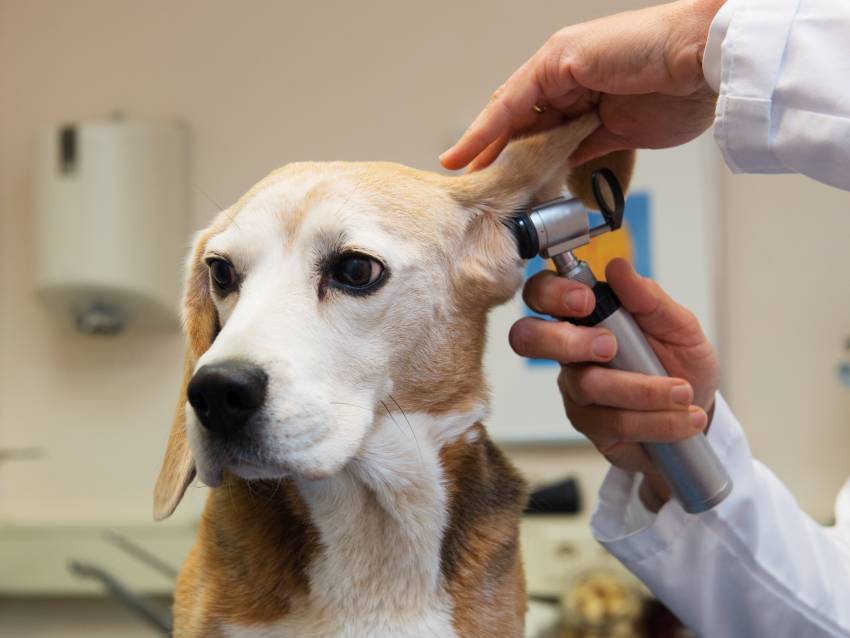How to tell if your dog is deaf
Dogs can be partially or totally deaf in one or both ears, the two main causes being congenital deafness (birth defects) and aging. A test can determine with certainty whether or not an animal hears well in both ears.
What causes hearing loss in dogs?
Dogs can have partial or total hearing loss. Depending on whether one or both ears are affected, this is referred to as unilateral or bilateral deafness.
The two main causes of deafness in dogs are :
• Congenital anomalies: A dog can be deaf from birth, certain congenital malformations are responsible for deafness in animals (the main cause being a developmental anomaly in the inner ear). Many breeds are predisposed to deafness: Dalmatian, Irish Setter, Australian Shepherd, Bull Terrier... Among the breeds at risk, dogs with a white coat and blue eyes are the most at risk of deafness. Most often, congenital deafness affects only one ear.
• Aging: Older dogs often have partial or total hearing loss associated with old age. This is called presbycusis.
Other causes can be responsible for deafness in dogs: ear infections, toxins, trauma, infectious agents, endocrine disease (hypothyroidism), tumors, etc...
A deaf dog can live normally even if some precautions are to be taken. First of all, it is necessary to adapt the education and to privilege the gestures for the learning of the various "orders" (lying down, sitting...). The exits must be done only in lead to avoid the accidents (the dogs not hearing the arrived cars, the recall is also impossible). Finally, it is necessary to be vigilant with the children who can be a little brusque and surprise the animals.
How to evaluate a dog's hearing?
Hearing problems are not easy to spot, but it is important to detect them because it has consequences for the animal's life.
A simple way to find out if a dog can hear is to make a loud noise when it is awake. Normally the dog's ears turn towards the source of the noise. If the ears are immobile at a sudden loud noise, then a hearing problem may be suspected.
Adult dogs should also know their name and come when you call them. If they never respond to their name, then again a hearing problem may be suspected.
A deaf dog may also sleep more (due to lack of external stimulation), play little or bark loudly... He may also be surprised and therefore react aggressively. You have to be very careful when deaf dogs live with children.
To know for sure if a dog is deaf, a consultation with a veterinarian is recommended. A complete clinical examination and additional tests will be performed to evaluate the animal's hearing.
An examination allows us to know with certainty if a dog can hear or not. This test is particularly useful to highlight cases of unilateral deafness that often go unnoticed. This is the PEATC test: it corresponds to the analysis of the auditory evoked potentials of the brain stem. This test is done in a few minutes, it does not require that the dogs be anesthetized. It can be done as early as 5 to 6 weeks of age.
Testing puppies of at-risk breeds can reveal a possible unilateral or bilateral deafness. It is advised not to breed these dogs as hereditary transmission is suspected.

